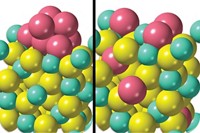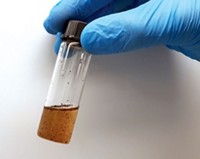Advertisement
Grab your lab coat. Let's get started
Welcome!
Welcome!
Create an account below to get 6 C&EN articles per month, receive newsletters and more - all free.
It seems this is your first time logging in online. Please enter the following information to continue.
As an ACS member you automatically get access to this site. All we need is few more details to create your reading experience.
Not you? Sign in with a different account.
Not you? Sign in with a different account.
ERROR 1
ERROR 1
ERROR 2
ERROR 2
ERROR 2
ERROR 2
ERROR 2
Password and Confirm password must match.
If you have an ACS member number, please enter it here so we can link this account to your membership. (optional)
ERROR 2
ACS values your privacy. By submitting your information, you are gaining access to C&EN and subscribing to our weekly newsletter. We use the information you provide to make your reading experience better, and we will never sell your data to third party members.
Environment
Exhaust Catalyst Traps And Scrubs NOx
Sulfur tolerant nitrogen oxide treatment catalyst could boost commercialization of fuel-efficient automobiles
by Mitch Jacoby
May 13, 2013
| A version of this story appeared in
Volume 91, Issue 19
Automobile engines designed to combust fuel in a large excess of oxygen can achieve higher fuel efficiency than other common engines. But standard catalytic cleanup technology cannot readily scrub (chemically reduce) the nitrogen oxides (NO and NO2, or NOx) in the exhaust of these so-called lean-burn engines because of the overwhelming excess of O2. A research team led by Hui Xian of Tianjin University, in China, has demonstrated that NOx can be scrubbed effectively by using a palladium-doped LaSrCoO3 material to trap and treat the pollutants (ACS Catal. 2013, DOI: 10.1021/cs400136t). The method works by oxidizing NOx compounds in excess O2 and trapping them as nitrates. The nitrates are periodically purged and reduced by hydrocarbons, which are deliberately generated by briefly switching the engine from a fuel-lean to a fuel-rich mode. In contrast to previously studied lean NOx trap materials, the new compound resists sulfur poisoning and does not depend on costly platinum. In addition, lean NOx trap technology could be simpler and smaller than an alternative NOx treatment method that requires carrying an onboard tank of a reductant such as urea.




Join the conversation
Contact the reporter
Submit a Letter to the Editor for publication
Engage with us on Twitter